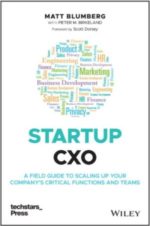Post on Return Path and People
Post on Return Path and People
For those readers of OnlyOnce who aren’t also readers of Fred’s AVC blog, Fred invited our SVP People, Angela, to guest post on his site this week as part of his series on HR/People. Her post is here, and it’s a great encapsulation of a lot of what we do at Return Path from a People perspective.
The Best Place to Work, Part 0
The Best Place to Work, Part 0
I keep getting questions about a deck I’ve used several times at Techstars, Seedcamp, DreamIt, and the like which is called “7 Ideas for Creating the Best Place to Work.” So today I will launch a 7-part series over the next 7 weeks to describe my 7 points. As always, this is not intended to be perfect or comprehensive, but it is a bit of lessons learned over the last 12-13 years at Return Path. It’s just 7 ideas – not the only 7 ideas. And there’s nothing magic about the number 7, despite what George Costanza says. Or Steven Covey.
Here’s the outline:
- Surround yourself with the best and brightest
- Create an environment of trust
- Manage yourself very, very well
- Be the consummate host
- Be the ultimate enabler
- Let people be people
- Create a thankful atmosphere
Let’s go! I will create a tag cloud for this series called Best Place to Work.
Marketing Data: What You Don’t Know Can Hurt You
Marketers have blinders on when it comes to some aspects of data. We‘re so focused on using it to build relationships and businesses, that we don’t pay enough attention to data’s inherent risks. Those risks are real, though. Our brands are constantly under attack, and even trivial oversights in data handling can leave us—and our customers—unacceptably vulnerable. We need to better understand the risks. We need to know more.
If marketers don’t develop industrywide expertise in all aspects of data use, if we can’t demonstrate that we can be trusted stewards of information, we risk losing our rights to use it. The DMA is taking the lead to make sure that we, as an industry, gain the knowledge we need: It’s Institute for Data Governance and Certification is a badly needed program that can make a real difference.
The Institute is a three-day intensive for marketers to learn how to protect their customers and their brands while using the power of data to connect with consumers—and ultimately to grow. The first course begins on July 18th in New York, with more scheduled across the country over the next year.
As many of you know, I chair the DMA’s board, so I’m not a neutral third party when I urge you to attend the Institute and get certified in marketing data governance. But if I’m biased it’s because I’m a passionate industry advocate and I believe that marketers should lead the global effort to champion intelligent, responsible data use. Before we can start, we all need to know what that means.
Please click here to learn more about how you can register for the DMA’s Institute for Data Governance and Certification.
How Many Thermometers Do You Need to Know the Turkey’s Done?
How Many Thermometers Do You Need to Know the Turkey’s Done?
Full credit to my colleague Jack Abbot for using this awesome phrase in an Engineering Management meeting I observed recently. It’s a gem. Filed! The context was around spending extra cycles creating more metrics that basically measure the same thing. And in theory, sure, you don’t want or need to do that, even if you do have a cool data visualization tool that encourages metric proliferation.
But as I was thinking about it a bit more, I think there are situations where you might want multiple thermometers to tell you about the done-ness of the turkey.
First, sometimes you learn something by measuring the same thing in multiple ways. Triangulation can be a beautiful thing. Not only does it work for satellites, but think of a situation where you have a metric that is really made up of multiple underlying metrics. Net Promoter Score is a good example. Aren’t you better off knowing the number of Promoters and Detractors as well as the Net?
Second, sometimes redundant metrics aren’t bad if there is a potential failure of one of them. For critical systems metrics that are measured in automated ways, sometimes automation fails. The second thermometer could be thought of as a backup. You can have an internal web performance monitoring system, but wouldn’t you feel better with Keynote or Gomez as well, just in case your internal system fails?
Finally, sometimes metrics move between “lagging” and “leading,” which are fundamentally different and useful for different purposes. For example, we talk about sales in a couple different ways here. There are bookings, which are forward-looking, and there is recognized revenue, which is backwards looking. They are both about revenue. But looking only at recognized revenue tells you nothing about the health of new business. And looking only at bookings tells you very little about the current and next quarter.
Jack, thanks for this gem of a phrase, and for the thinking it provoked!
Running a Productive Offsite
Running a Productive Offsite
A couple OnlyOnce readers asked me to do a post on how I run senior team offsites. It’s a great part of our management meeting routine at Return Path, and one that Patrick Lencioni talks about extensively in Death by Meeting (review, book) – a book worth reading if you care about this topic.
My senior team has four offsites per year. I love them. They are, along with my Board meetings, my favorite times of the year at work. Here’s my formula for these meetings:
– WHY: There are a few purposes to our offsites. One for us is that our senior team is geographically distributed across 4 geographies at the executive level and 6 or 7 at the broader management team level. So for us, these are the only times of the year that we are actually in the same place. But even if we were all in one place, we’d still do them. The main purpose of the offsite is to pull up from the day-to-day and tackle strategic issues or things that just require more uninterrupted time. The secondary purpose is to continue to build and develop the team, both personal relationships and team dynamics. It’s critically important to build and sustain deep relationships across the Executive Team. We need this time in order to be a coordinated, cohesive, high trust, aligned leadership team for the company. As the company has expanded (particularly to diverse geographies), our senior team development has become increasingly critical
– WHO: Every offsite includes what we call our Executive Committee, which is for the most part, my direct reports, though that group also includes a couple C/SVP titled people who don’t report directly to me but who run significant parts of the company (7-8 people total). Two of the four offsites we also invite the broader leadership team, which is for the most part all of the people reporting into the Executive Committee (another 20 people). That part is new as we’ve gotten bigger. In the earlier days, it was just my staff, and maybe one or two other people as needed for specific topics
– WHERE: Offsites aren’t always offsite for us. We vary location to make geography work for people. And we try to contain costs across all of them. So every year, probably 2 of them are actually in one of our offices or at an inexpensive nearby hotel. Then the other 2 are at somewhat nicer places, usually one at a conference-oriented hotel and then one at a more fun resort kind of place. Even when we are in one of our offices, we really treat it like an offsite – no other meetings, etc., and we make sure we are out together at dinner every night
– WHEN: 4x/year at roughly equal intervals. We used to do them right before Board meetings as partial prep for those meetings, but that got too crowded. Now we basically do them between Board meetings. The only timing that’s critical is the end of year session which is all about budgeting and planning for the following year. Our general formula when it’s the smaller group is two days and at least one, maybe two dinners. When it’s the larger group, it’s three days and at least two dinners. For longer meetings, we try to do at least a few hours of fun activity built into the schedule so it’s not all work.
– WHAT: Our offsites are super rigorous. We put our heads together to wrestle with (sometimes solve) tough business problems – from how we’re running the company, to what’s happening with our culture, to strategic problems with our products, services and operations. The agenda for these offsites varies widely, but the format is usually pretty consistent. I usually open every offsite with some remarks and overall themes – a mini-state-of-the-union. Then we do some kind of “check-in” exercise either about what people want to get out of the offsite, or something more fun like an envisioning exercise, something on a whiteboard or with post-its, etc. We always try to spend half a day on team and individual development. Each of us reads out our key development plan items from our most recent individual 360, does a self-assessment, then the rest of the team piles on with other data and opinions, so we keep each other honest and keep the feedback flowing. Then we have a team development plan check-in that’s the same, but about how the team is interacting. We always have one or two major topics to discuss coming in, and each of those has an owner and materials or a discussion paper sent out a few days ahead of time. Then we usually have a laundry list of smaller items ranging from dumb/tactical to brain-teasing that we work in between topics or over meals (every meal has an agenda!). There’s also time at breaks for sub-group meetings and ad hoc conversations. We do try to come up for air, but the together time is so valuable that we squeeze every drop out of it. Some of our best “meetings” over the years have happened side-by-side on elliptical trainers in the hotel gym at 6 a.m. We usually have a closing check-out, next steps recap type of exercise as well.
– HOW: Lots of our time together is just the team, but we usually have our long-time executive coach Marc Maltz from Triad Consulting facilitate the development plan section of the meeting.
I’m sure I missed some key things here. Team, feel free to comment and add. Others with other experiences, please do the same!
Book Short: Alignment Well Defined
The Advantage: Why Organizational Health Trumps Everything Else In Business is Patrick Lencioni’s newest book. Unlike most or all of his other books (see the end of this post for the listing), this one is not a fable, although his writing style remains very quick and accessible.
I liked this book a lot. First, the beginning section is a bit of a recap of his Five Dysfunctions of a Team which I think was his best book. And the ending section is a recap of his Death by Meeting, another really good one. The middle sections of the book are just a great reminder of the basic building blocks of creating and communicating strategy and values – about driving alignment.
But the premise, as the subtitle indicates, is that maintaining organizational health is the most important thing you can do as a leader. I tell our team at Return Path all the time that our culture is a competitive advantage in many ways, some quantifiable, and others a little less tangible.
A telling point in the book is when Lencioni is relaying a conversation he had with the CEO of a client company who does run a healthy organization – he asked, “Why in the world don’t your competitors do any of this?” And the client responded, “You know, I honestly believe they think it’s beneath them.” Lencioni goes on to say, “In spite of its undeniable power, so many leaders struggle to embrace organizational health because they quietly believe they are too sophisticated, too busy, or too analytical to bother with it.” And there you have it. More examples of why “the soft stuff” is mission critical.
Lencioni’s “Recipe for Organizational Health” (the outline of the book):
– Build a Cohesive Leadership Team
– Create Clarity
– Overcommunicate Clarity
– Reinforce Clarity
And his recipe for creating a tight set of “mission/vision/values” (the middle of the book):
1. Why do we exist?
2. How do we behave?
3. What do we do?
4. How will we succeed?
5. What is most important, right now?
6. Who must do what?
While there are lots of other good frameworks for doing all of this, Lencioni’s models and books are great, simple reminders of one of the CEO’s most important leadership functions. We’re recrafting our own mission and values statements at the moment at Return Path, and we’re doing it using this 6-Question framework instead of the classic “Mission/Vision/Values” framework popularized a few years back by Harvard Business Review.
The full book series roundup as far as OnlyOnce has gotten so far is:
- The Three Signs of a Miserable Job (post, book)
- The Five Temptations of a CEO (post, book)
- The Four Obsessions of an Extraordinary Executive (post, book)
- Death by Meeting (post, book)
- The Five Dysfunctions of a Team (post, book, Field Guide)
- Silos, Politics and Turf Wars (post, book)
- Getting Naked (post, book)
- The Advantage (book)
How Creative Do You Have to Be?
How Creative Do You Have to Be?
To follow up on last week’s post about the two types of entrepreneurs, I hear from people all the time that they can’t be an entrepreneur because they’re not creative. I used to say that myself, but Mariquita reminds me periodically that that’s nonsense…and as a case in point, I didn’t have the original idea that gave birth to Return Path James Marciano did. And I didn’t have the original idea to create a deliverability business, George Bilbrey did. Or an inbox organizer consumer application, Josh Baer did.
But I still consider myself an entrepreneur as the founder and leader of the company, as it takes a lot of creativity and business building acumen to get from an idea to a business, or from a small business to a big business.
Sure, you can invent something from scratch. Someone created the first car. The first computer. The first telephone. Harnessed the power of electricity for home/commercial use. The first deliverability service or inbox organizer. George and others will say you can create a process for this…but I think it’s a bit like lightening striking.
But sometimes the best ideas are ones that are borrowed from others or combined from other sets of existing things. There’s nothing wrong with that! And you can do this without stealing intellectual property. For example, I took a ton of business trips my first few years out of college with a heavy duffel bag that caused a pinched nerve in my shoulder. Then someone decided to put wheels, a relatively old and stable technology, on suitcases about 15 years ago. Hallelujah.
Regardless of what type of entrepreneur you are, you can exercise business creativity in lots of different ways, not just by inventing a new product.
UPDATE: This week’s Economist has an interesting article that fits right into this discussion. It’s called In Praise of Misfits, and its telling subtitle is something like “Why business needs people with dyslexia, ADD, and Asperger’s.” A great read on this theme.
What Kind of Entrepreneur Are You?
What Kind of Entrepreneur Are You?
I think there are two kinds of entrepreneurs, and sometimes, you can be both. There is the kind that starts businesses, and there is the kind that builds businesses.
The kind of entrepreneur who starts businesses but usually doesn’t like running or building them are typically serial entrepreneurs. How can you spot one? They:
- Have an idea a minute and a bit of ADD – they are attracted to bright shiny objects – they can’t focus
- Would rather generate 1 good and idea and 19 bad ones than just 1 good one
- Are always thinking about the next thing, only excited by the possibility of what could be, not by what is
- Are more philosophical and theoretical than practical
- Probably shouldn’t run businesses for more than a few months
- Are likely to frustrate everyone around them and get bored themselves
- Are really fun at cocktail parties
- Say things like “I thought of auctions online way before eBay!”
The second kind of entrepreneur is the kind of person who can run businesses but may or may not come up with the idea. Typically, these people:
- Care about success, not about having the idea
- Love to make things work
- Would rather generate 1 idea and execute it well than 2 ideas
- Are problem solvers
- Are great with people
- May be less fun at cocktail parties, but you’d want them on your team in a game of paintball or laser tag
It’s the rare one who can do both of these things well. But you know them when you see them. Think Dell or Microsoft…or even Apple in a roundabout way if you consider the fact that Jobs hired Cook (and others) to partner with them to run the business.
Book Short: Internet True Crime
Book Short: Internet True Crime
Fatal System Error: The Hunt for the New Crime Lords Who Are Bringing Down the Internet, by Joseph Menn (book, kindle) was a bit of a disappointment. I was really hoping for more of an explanation of how the “business” of Internet crime works — what the economics are like, what the landscape/scope/sectors are like, who the players are.
What I got was a bit of a true crime novel, the story of Barrett Lyon and Andy Crocker, who are respectively a geek and a cop, and their very specific stories of tracking down a handful of internet criminals around a handful of technical tactics (DDOS attacks and botnets). It wasn’t bad, the stories were ok and occasionally entertaining, but it was very narrow.
It felt to me like there is a much more interesting story to tell around criminals who USE the Internet to commit crimes as opposed to people attacking the infrastructure. Has anyone ever run across a book like that?
You Can’t Teach a Cat How to Bark, But You Might be Able to Teach it How to Walk on its Hind Legs
You Can’t Teach a Cat How to Bark, But You Might be Able to Teach it How to Walk on its Hind Legs
My co-founder George and I have had this saying for a while. Cats don’t bark. They can’t. Never will. They also don’t usually walk on their hind legs in the wild, but some of them, after some training, could probably be taught to do so.
Working with people on career evolution sometimes follows that same path. Lots of the time, an employee’s career evolution is natural and goes well. They’re playing to their strengths, in their sweet spot, progressing along nicely. But often that’s not the case. And it goes both ways. Some employees want something different. The sales rep wants to be a sales manager. The product manager wants to try marketing. Sometimes the organization needs something different out of the person. Be a stronger manager. Be more collaborative. Acquire more domain or functional expertise.
These transitions might or might not be difficult. It completely depends on the person involved and the competencies required for the new role. And that’s where the barking cat comes into play. There’s more art than science here, but as a manager or as the employee, figuring out the gap between existing strengths/experience and the required competencies for the new job, and whether the missing elements *can* be taught or not is the exercise at hand.
I’m not sure there’s a useful rule of thumb here, either. I had a boss once many years ago who said you can teach smart people how to do anything other than sales. Another boss said you can teach anyone any fact, but you can’t teach anyone empathy. Both of these feel too one-size-fits-all for me. One thing we do at Return Path from time to time is encourage an employee facing some kind of stretch transition (for whatever reason) to participate in or run a short-term side project with a mentor that lets them flex some relevant new muscles. Essentially we let them try it on for size.
Learning Through Extremes, or Shifting Gears part II
OnlyOnce is 8 years old this week, which is hard to believe. So it is fitting that I got halfway through a new post this morning, then a little alarm bell went off in my head that I had written something similar before. The topic is around moderation versus extremes. I first wrote about this topic in 2005 in a post called Shifting Gears but I have thought about it more recently in a different way.
Instead of phrasing this as a struggle between “Meden Agan,” which is Greek for “everything in moderation,” and “Gor oder gornischt,” which is Yiddish for “all or nothing,” I’d like to focus here on the value of occasionally going to an extreme. And that value is around learning. Let me give three examples:
-We were having a buy vs. build conversation at work a few months back as we were considering an acquisition. Some people in the room had an emotional bias towards buy; others toward build. So we framed the debate this way: “Would you acquire the company for $1 instead of building the technology?” (Yes!) “Would you buy it for $10mm?” (No!) Taking the conversation to the extremes allowed us to focus on a rational answer as opposed to an emotional one — where is the price where buy and build are in equilibrium?
– With my colleague Andrea, I completed a 5-day juice fast a few weeks back. It was good and interesting on a bunch of levels. But I came away with two really interesting learnings that I only got from being extreme for a few days: I like fruits and veggies (and veggie juices) a lot and don’t consume enough of them; and I sleep MUCH better at night on a relatively empty stomach
– Last year, I overhauled my “operating system” at work to stop interviewing all candidates for all jobs and stop doing 90-day 1:1 meetings with all new employees as well. I wrote about this in Retail, No Longer. What finally convinced me to do it was something one of my colleagues said to me, which was “Will you be able to keep these activities up when we have 500 employees?” (No) “So what is the difference if you stop now and save time vs. stopping in 6 months?” Thinking about the extreme got me to realize the full spectrum
It may not be great to live at the extremes, but I find extremes to be great places to learn and develop a good sense of what normal or moderate or real is.



